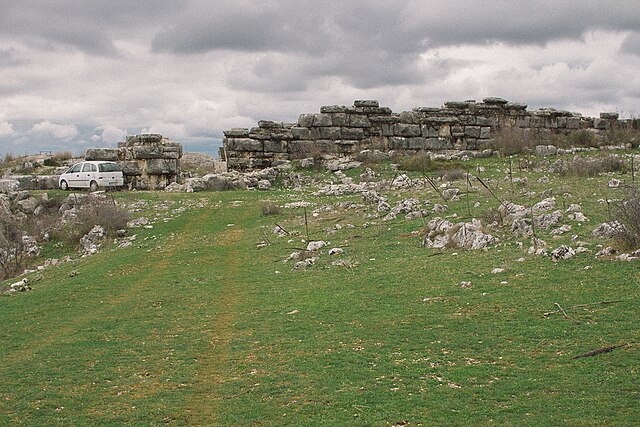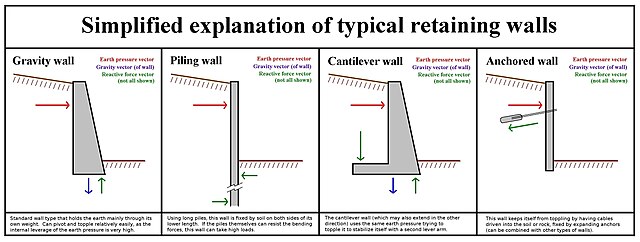Dry stone, sometimes called drystack or, in Scotland, drystane, is a building method by which structures are constructed from stones without any mortar to bind them together. A certain amount of binding is obtained through the use of carefully selected interlocking stones.
Dry stone walls in the Yorkshire Dales, England
Partially damaged passageway in the Great Enclosure of Great Zimbabwe.
Daorson in Bosnia and Herzegovina
Dry stone fence, or drystane dyke, at Muchalls Castle, Scotland
Retaining walls are relatively rigid walls used for supporting soil laterally so that it can be retained at different levels on the two sides. Retaining walls are structures designed to restrain soil to a slope that it would not naturally keep to. They are used to bound soils between two different elevations often in areas of inconveniently steep terrain in areas where the landscape needs to be shaped severely and engineered for more specific purposes like hillside farming or roadway overpasses. A retaining wall that retains soil on the backside and water on the frontside is called a seawall or a bulkhead.
A gravity-type stone retaining wall
Various types of retaining walls
Construction types of gravity retaining walls
An example of crib wall








